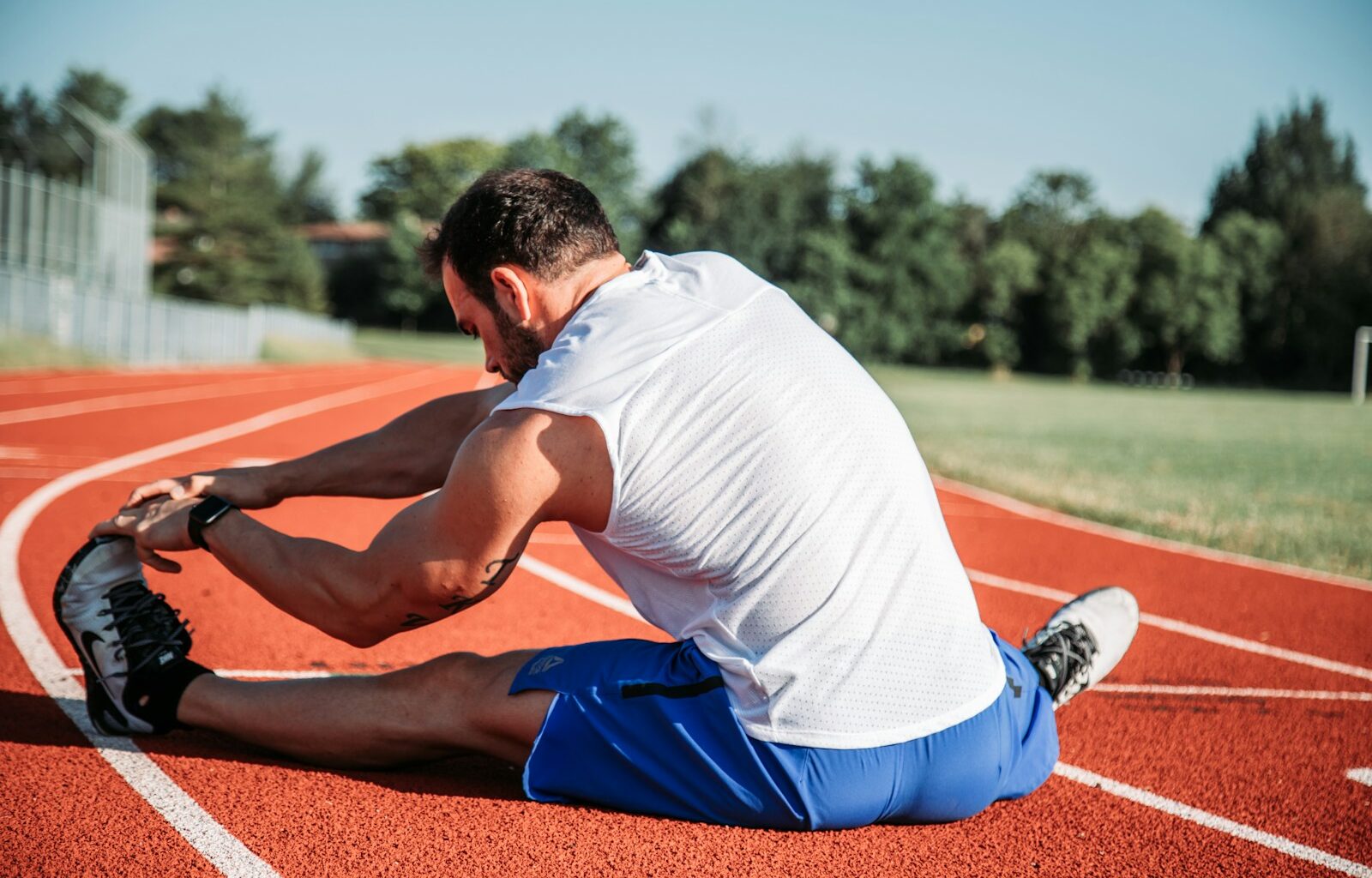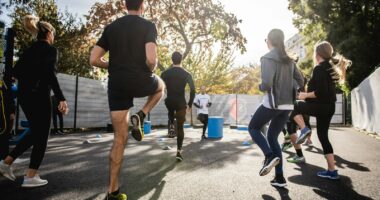Research reveals that stretching timing significantly impacts performance, injury prevention, and recovery, with dynamic stretching before exercise and static stretching after workouts providing optimal benefits. Studies from the Journal of Sports Medicine show that static stretching before exercise reduces power output by 8-28% and strength by 5-15%, while post-workout static stretching improves flexibility by 23% and reduces muscle soreness by 19% when performed correctly.
1. Pre-Workout Dynamic Stretching Benefits and Mechanisms
1.1 Neural Activation and Movement Preparation
Dynamic stretching activates the nervous system and prepares movement patterns specific to upcoming activities through controlled movements that mimic exercise motions. This neural preparation improves coordination, reaction time, and movement quality during workouts.
1.2 Blood Flow and Temperature Increase
Movement-based stretching increases core temperature and blood flow to working muscles more effectively than static holds. Elevated tissue temperature improves muscle contraction efficiency and reduces injury risk through enhanced tissue elasticity.
1.3 Range of Motion Activation
Dynamic stretching maintains or slightly improves range of motion while preserving muscle power and strength necessary for performance. Active movements prepare joints for exercise demands without compromising force production capacity.
1.4 Sport-Specific Movement Pattern Rehearsal
Dynamic warm-ups can rehearse specific movement patterns, improving motor coordination and skill execution during actual exercise or competition. This movement preparation enhances performance through neuromuscular rehearsal and confidence building.
2. Static Stretching Pre-Exercise: The Performance Penalties
2.1 Force Production Reduction and Power Loss
Static stretching before exercise reduces muscle force production through neural inhibition and mechanical changes that decrease power output. This effect persists for 10-60 minutes after stretching, significantly impacting explosive activities.
2.2 Neuromuscular Inhibition and Reflex Depression
Prolonged static stretching suppresses stretch reflexes and reduces neural drive to muscles, creating temporary weakness that impairs performance in strength and power activities requiring maximum muscle activation.
2.3 Muscle Stiffness and Elastic Energy Storage
Pre-exercise static stretching reduces beneficial muscle stiffness that stores elastic energy during movement. This reduction in muscle-tendon stiffness decreases efficiency in running, jumping, and other elastic activities.
2.4 Injury Risk vs Performance Trade-offs
While static stretching may reduce some injury types, the performance decrements often outweigh injury prevention benefits for healthy individuals during most activities, especially those requiring power and strength.
3. Post-Workout Static Stretching: Recovery and Flexibility Gains
3.1 Muscle Length Adaptation and Flexibility Improvement
Post-exercise static stretching capitalizes on elevated tissue temperature and neural relaxation to achieve greater range of motion improvements. Stretched muscles remain warm and pliable, enabling longer-lasting flexibility gains.
3.2 Parasympathetic Activation and Recovery Enhancement
Static stretching after exercise activates the parasympathetic nervous system, promoting relaxation and recovery through reduced heart rate, blood pressure, and stress hormone levels that support adaptation processes.
3.3 Metabolic Waste Removal and Circulation
Gentle stretching maintains elevated circulation that helps remove metabolic byproducts from exercise while delivering nutrients for recovery. This enhanced circulation may reduce muscle soreness and stiffness.
3.4 Psychological Relaxation and Stress Reduction
Post-workout stretching provides mental transition from high-intensity exercise to rest, reducing psychological stress and promoting positive associations with exercise through pleasant cool-down experiences.
4. Optimal Dynamic Warm-Up Protocols
4.1 Duration and Intensity Progressions
Effective dynamic warm-ups last 5-15 minutes with gradual intensity increases from gentle movements to sport-specific motions. This progression prepares the body systematically without causing fatigue before main activities.
4.2 Movement Patterns and Exercise-Specific Preparation
Select dynamic movements that mirror upcoming exercise patterns—leg swings before running, arm circles before swimming, or bodyweight squats before strength training. Specific preparation improves performance transfer.
4.3 Joint Mobility and Multi-Planar Movement
Include movements in multiple planes of motion (forward/backward, side-to-side, rotational) that prepare joints for complex movement demands during exercise while addressing mobility limitations.
4.4 Activation Exercises and Muscle Recruitment
Incorporate activation exercises that target commonly underactive muscles like glutes, deep core stabilizers, or postural muscles that improve movement quality and injury prevention during main workouts.
5. Effective Post-Exercise Static Stretching Strategies
5.1 Timing and Temperature Considerations
Perform static stretching within 10-30 minutes post-exercise while muscles remain warm and pliable. Cold muscles resist stretching and may be more prone to injury during aggressive stretching attempts.
5.2 Hold Duration and Repetition Guidelines
Research supports 15-60 second holds per muscle group with 2-4 repetitions for optimal flexibility gains. Longer holds may provide additional benefits but require more time investment for minimal extra improvement.
5.3 Intensity and Discomfort Management
Stretch to mild discomfort (5-6 on 10-point scale) rather than pain to achieve benefits without injury risk. Aggressive stretching can cause protective muscle guarding that prevents effective lengthening.
5.4 Breathing and Relaxation Techniques
Use deep, slow breathing during stretches to promote relaxation and parasympathetic activation that enhances flexibility gains while providing psychological recovery benefits.
6. Individual Variations and Special Considerations
6.1 Age-Related Stretching Modifications
Older adults may benefit from longer warm-ups with more gentle dynamic movements and extended post-exercise stretching to maintain mobility that naturally decreases with aging. Age-related changes require adapted protocols.
6.2 Sport-Specific Requirements and Adaptations
Different sports require different stretching approaches—gymnasts may benefit from more aggressive flexibility work while powerlifters may focus on mobility for lifting positions rather than maximum range of motion.
6.3 Injury History and Rehabilitation Considerations
Individuals with injury history may require modified stretching protocols based on tissue healing status and movement restrictions. Professional guidance helps determine appropriate stretching timing and intensity.
6.4 Individual Response Variations and Assessment
Some individuals respond differently to stretching protocols due to genetic factors, training history, or anatomical variations. Monitor individual response and adjust protocols based on performance and recovery outcomes.
7. Integration with Complete Training Programs
7.1 Periodization and Training Phase Considerations
Stretching protocols may vary based on training phases—more mobility work during preparation phases, maintenance during competition periods, and rehabilitation focus during recovery phases.
7.2 Time Constraints and Practical Implementation
When time is limited, prioritize dynamic warm-up over post-exercise stretching for performance activities, or focus stretching on specific tight areas rather than comprehensive full-body routines.
7.3 Combined Approaches and Hybrid Methods
Some situations may benefit from combined approaches like light dynamic stretching followed by brief static holds, or active stretching techniques that provide benefits of both methods.
7.4 Long-term Flexibility Development
Develop separate flexibility sessions focused on static stretching and mobility work rather than relying only on pre/post-exercise stretching for significant range of motion improvements.
Conclusion
The science clearly supports dynamic stretching before exercise to prepare the body for performance while reserving static stretching for post-workout flexibility development and recovery enhancement. Understanding these mechanisms enables optimization of stretching protocols for individual goals and activities. The key lies in matching stretching type and timing to desired outcomes—performance preparation requires movement-based warm-ups while flexibility development benefits from post-exercise static stretching when tissues are warm and receptive. Avoid the common mistake of extensive static stretching before power or strength activities, and don’t neglect the recovery and flexibility benefits of post-workout stretching routines.











